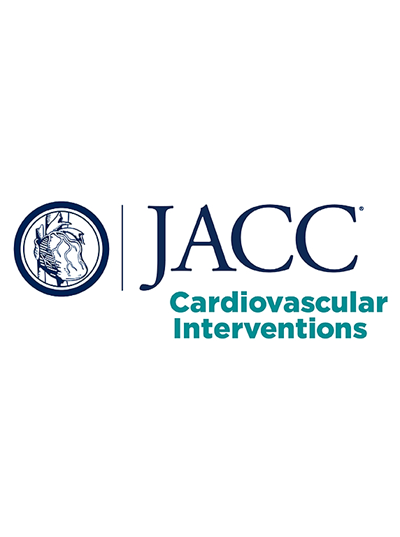Diabetic Status and Thrombogenicity
IF 11.7
1区 医学
Q1 CARDIAC & CARDIOVASCULAR SYSTEMS
引用次数: 0
Abstract
Background
A heightened prothrombotic environment, combined with premature and more aggressive atherosclerosis, contributes to the elevated cardiovascular risk in patients with diabetes mellitus (DM).
Objectives
The aim of this study was to evaluate the association between DM status and thrombogenicity and their prognostic implications in patients with significant coronary artery disease.
Methods
A total of 2,501 patients with coronary artery disease undergoing percutaneous coronary intervention, with on-admission glycated hemoglobin and thrombogenicity indexes (measured by thromboelastography). Major adverse cardiovascular events (MACE) were defined as a composite of all-cause death, myocardial infarction, or stroke within 4-year follow-up.
Results
Patients with DM (n = 970 [38.8%]) demonstrated significantly higher platelet-fibrin clot strength (PFCS), as indicated by maximal amplitude (median [Q1-Q3]: 67.1 [62.2-72.2] mm vs. 65.5 [61.0-70.4] mm; P < 0.001), and reduced fibrinolytic activity, measured by lysis at 30 minutes (median [Q1-Q3]: 0.1% [0.0%-1.0%] vs. 0.2% [0.0%-1.3%]; P = 0.003), compared to patients without DM. PFCS level was closely related with diabetic status, showing a positive relationship with glycated hemoglobin level up to 7.0% and then reaching a plateau. In a multivariable analysis, high PFCS phenotype defined as maximal amplitude ≥68 mm (HR: 1.39; 95% CI: 1.07-1.81; P = 0.015) and DM phenotype (HR: 1.38; 95% CI: 1.05-1.79; P = 0.018) were independently associated with MACE occurrence. The presence of diabetic phenotype and high PFCS exhibited an additive effect on MACE occurrence (HR: 2.49; 95% CI: 1.77-3.51; P < 0.001).
Conclusions
In percutaneous coronary intervention–treated patients, diabetic status and clot-strength value were significantly correlated. High clot-strength phenotype increased the risk for MACE, irrespective of diabetic phenotype. (Gyeongsang National University Hospital Registry [GNUH]; NCT04650529)
求助全文
约1分钟内获得全文
求助全文
来源期刊

JACC. Cardiovascular interventions
CARDIAC & CARDIOVASCULAR SYSTEMS-
CiteScore
11.60
自引率
8.80%
发文量
756
审稿时长
4-8 weeks
期刊介绍:
JACC: Cardiovascular Interventions is a specialist journal launched by the Journal of the American College of Cardiology (JACC). It covers the entire field of interventional cardiovascular medicine, including cardiac, peripheral, and cerebrovascular interventions. The journal publishes studies that will impact the practice of interventional cardiovascular medicine, including clinical trials, experimental studies, and in-depth discussions by respected experts. To enhance visual understanding, the journal is published both in print and electronically, utilizing the latest technologies.
 求助内容:
求助内容: 应助结果提醒方式:
应助结果提醒方式:


